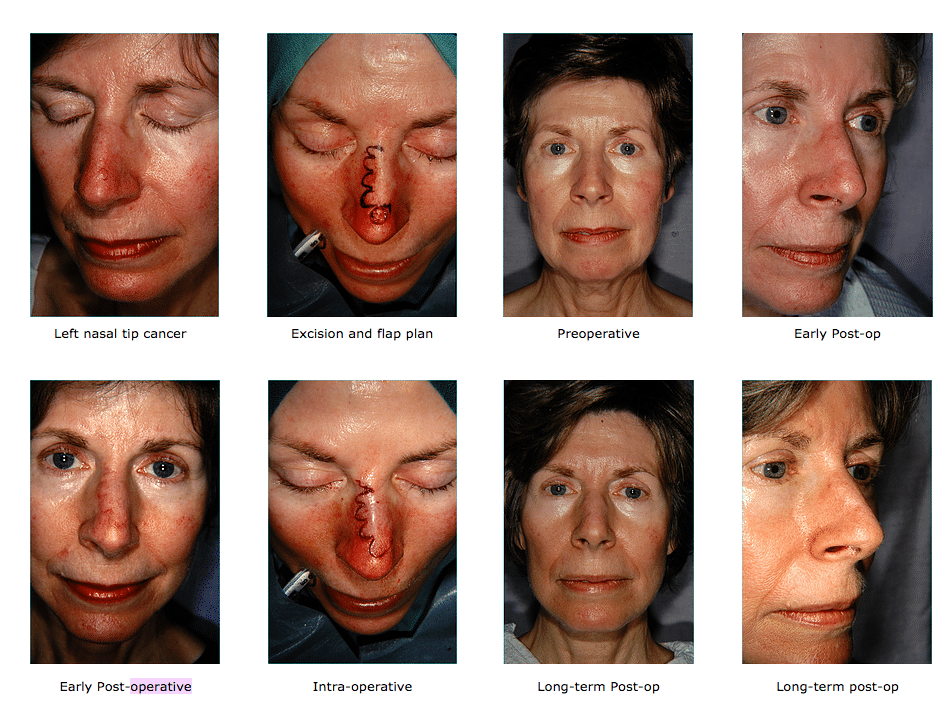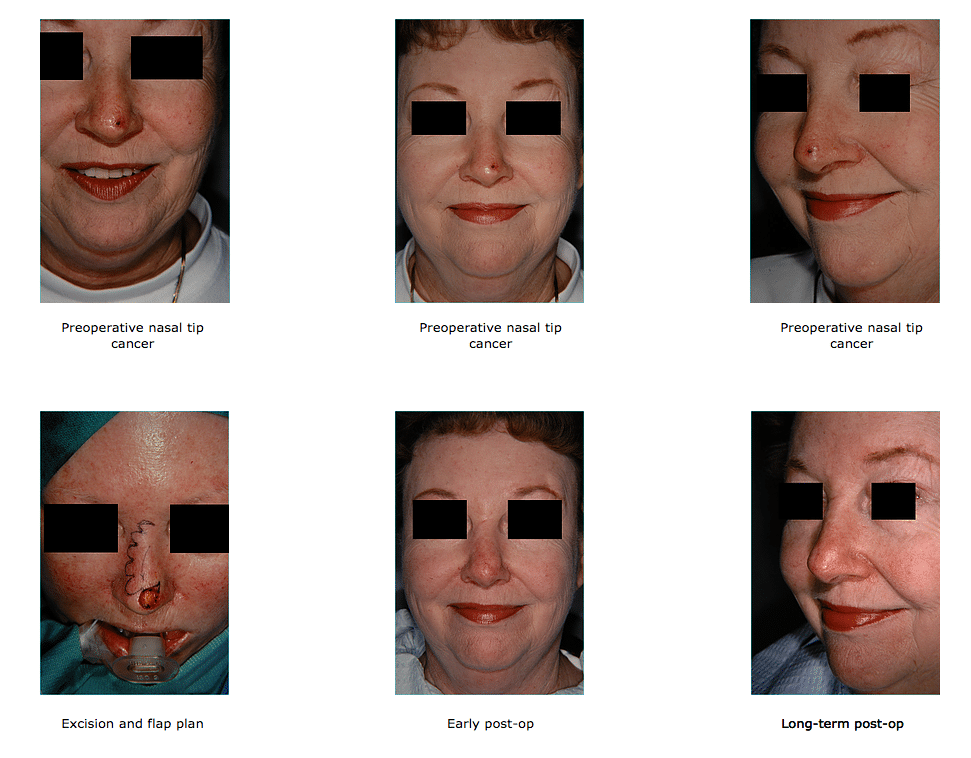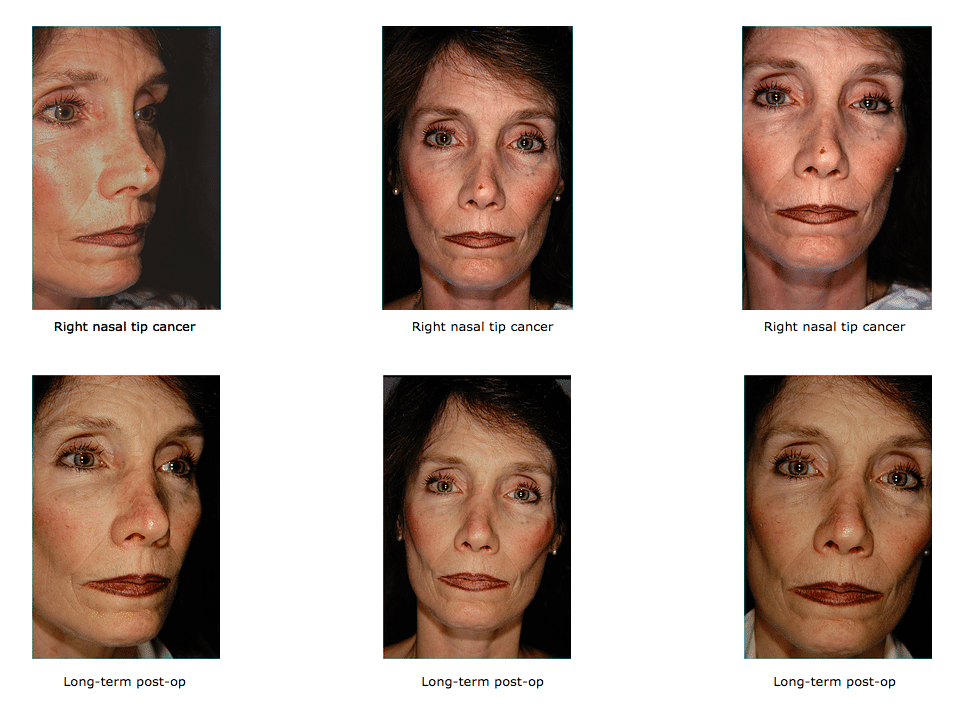Nasal Tip Reconstruction

About this procedure
The nose is that anatomic part with which we lead into all social situations. It is important that it looks normal. Loss of the nose or any of its parts can result from trauma, infection, or excision for malignancy. It is not uncommon for the plastic surgeon to encounter a patient on whom the end or the dorsum of the nose has been removed for a skin cancer. This is especially true in patients who have undergone Mohs chemosurgery by a dermatologist.
Patients will present at the plastic surgeon’s office with a defect on their nose. When this defect is on the end of the nose or the nasal tip, it can be a challenging task for the surgeon to restore or reconstruct it. Characteristically, surgeons repair defects with free skin grafts, or with skin remaining attached to the person to ensure that it has its own blood supply. This is called a skin flap.
If this is exposed nasal cartilage in the defect, a free skin graft will not succeed for lack of blood supply. In such cases, a flap is required. The goal is to get matching skin into the defect. The best alternative is the single-stage, multilobe rotation flap. Other alternatives include nasolabial cheek flaps or forehead flaps. These procedures require at least two stages and sometimes more. In our experience, the multilobe rotation flap, carefully done, can provide the optimal result with matching skin and the least noticeable scarring.
We have presented this procedure before the National Rhinoplasty Society, and it has become our “work-horse” procedure for restoring the nasal tip when it has been removed. The flap depends on the fact that skin at the root of the nose is relatively mobile, whereas the remaining nasal skin has limited mobility. An adjacent lobe is designed just smaller to the defect, and a series of lobes are delineated in an arc with the next lobe filling the space where the previous lobe was taken. This is carried all the way up to the root of the nose, which can then be closed primarily without the necessity of a skin graft.
By placing all the sutures beneath the skin, any tell-tale, cross-hatch suture marks are avoided, and the scars go on to heal with little visible scarring. The Multilobe Rotation Flap offers the best alternative to correct difficult-to-treat defects on the end of the nose, as can be seen in cases of excision for basal cell carcinoma or squamous cell cancer.
If you have lost the skin on the end of your nose due to cancer or other causes or have a deformity which needs correction, be sure to contact us and make an appointment for a consultation for restoration of your nasal defect. Our surgeons at Fairbanks Plastic Surgery have extensive experience in nasal reconstruction and they would be happy to help you.
Immediate Nasal Tip Reconstruction Following Cancer Excision

Immediate Nasal Tip Reconstruction Following Cancer Excision
Immediate Nasal Tip Reconstruction Following Cancer Excision
*All before and after photos are real patients of Fairbanks Plastic Surgery. Identifiable images are used with patient permission.
